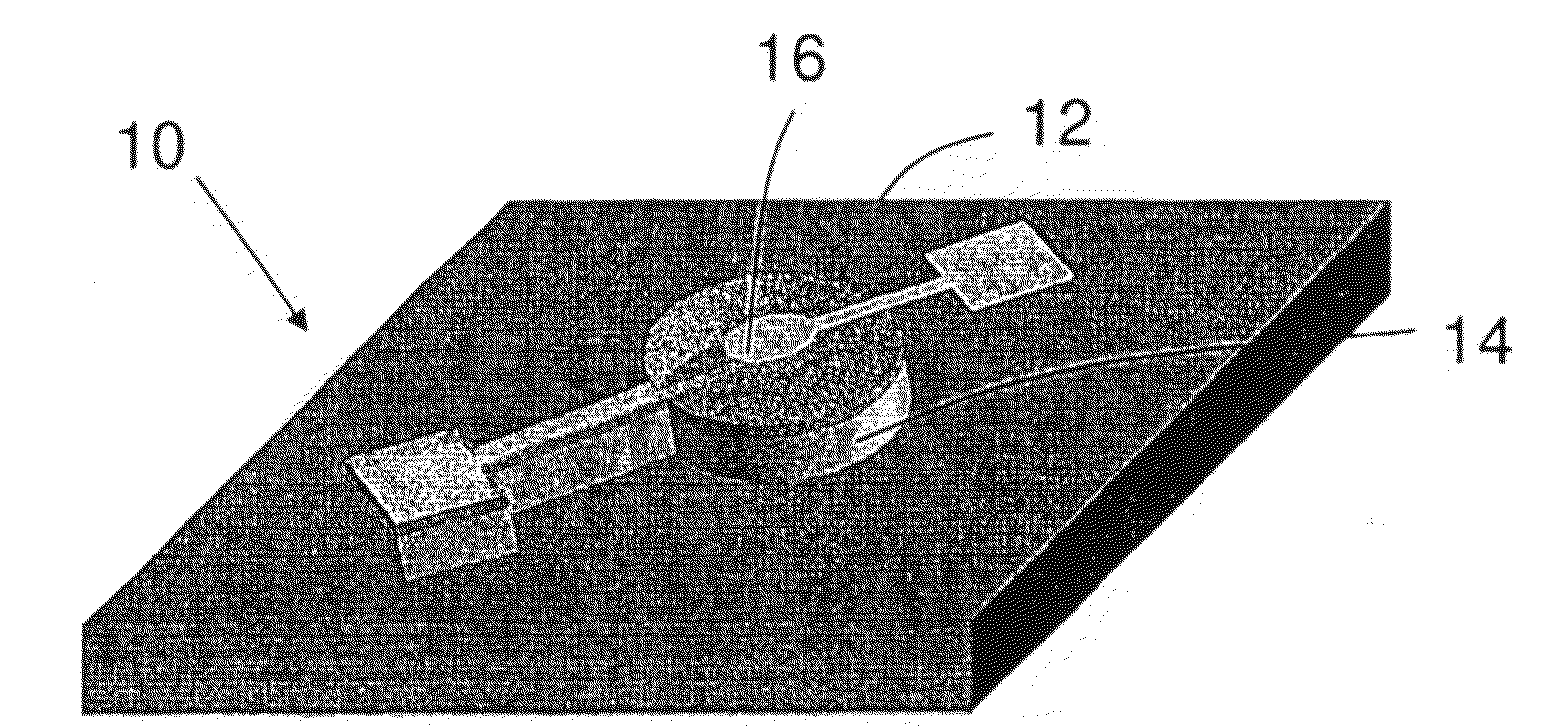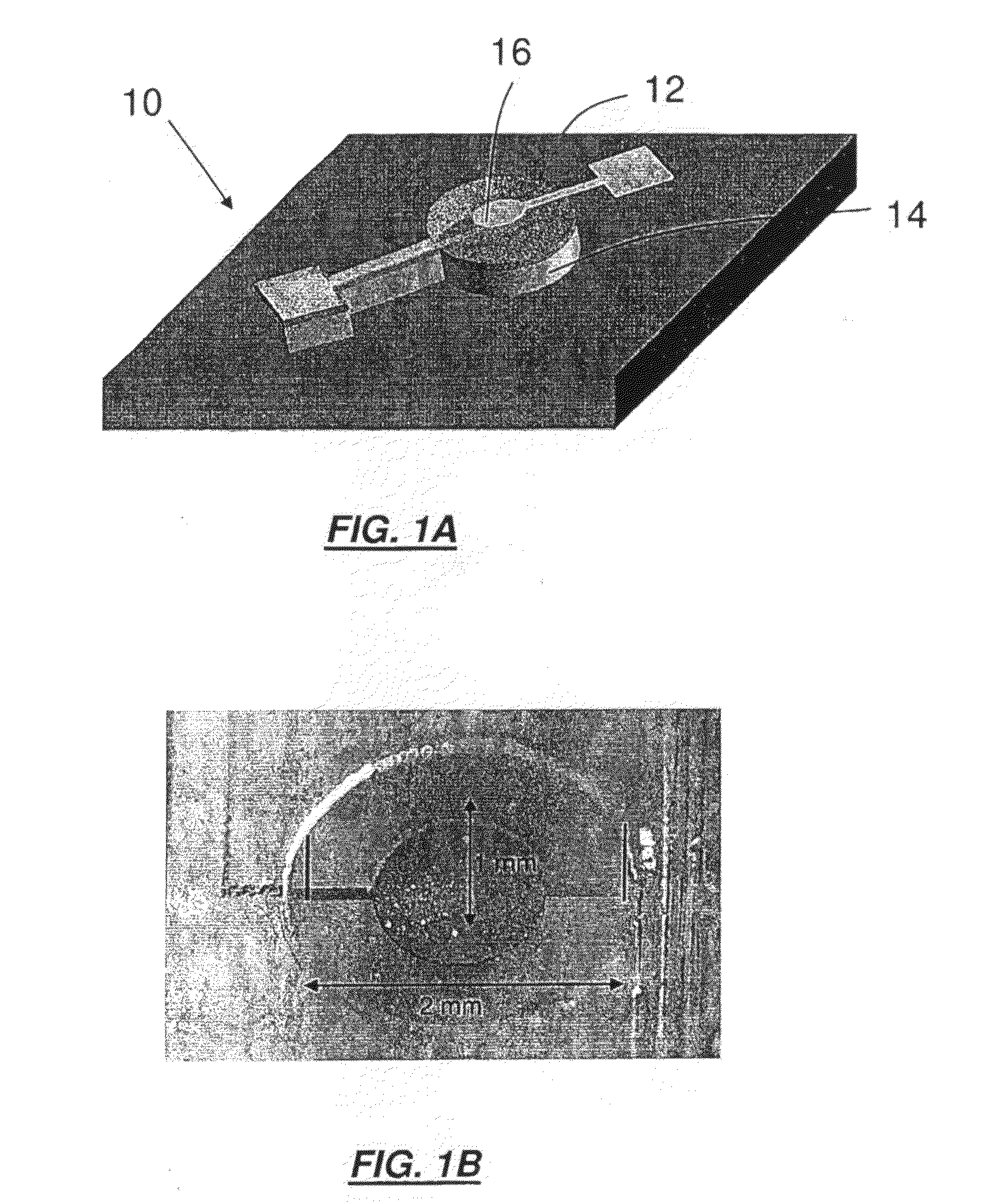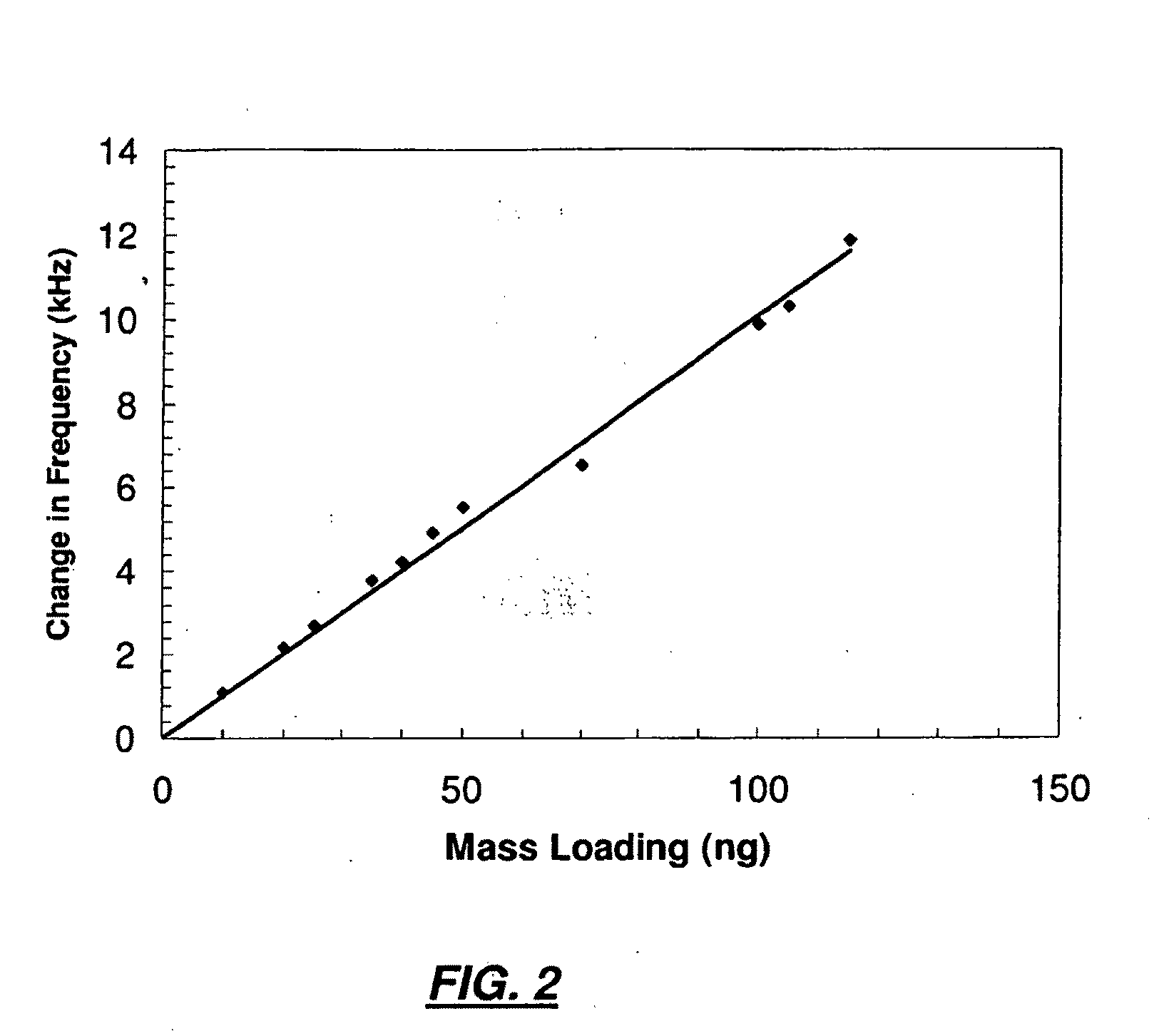Carbon nanotube-quartz resonator with femtogram resolution
a carbon nanotube and resonator technology, applied in the field of sensors, can solve the problems of limited widespread use of bio(chemical) sensing, not actually demonstrated, etc., and achieve the effect of improving the characteristics of the sensor, and increasing the quality factor of the resonator
- Summary
- Abstract
- Description
- Claims
- Application Information
AI Technical Summary
Benefits of technology
Problems solved by technology
Method used
Image
Examples
Embodiment Construction
[0031]Using an inductively coupled plasma etcher and SF6 gas chemistry, we were able to etch AT-cut quartz at an etch rate of ˜0.2 μm / min using a 10 μm thick, patterned, nickel over-layer as the mask. The rms roughness of the etched surface was found to be ˜1 nm (peak to valley roughness of 2.5 nm) after an etch depth of ˜70 μm while, the rms roughness of the as polished side of the quartz crystal of ˜8 nm (peak to valley roughness of 60 nm). We etched quartz resonators of two different thicknesses 90 μm and 34 μm, each with a diameter of 2 mm and an electrode diameter of 1 mm as shown in FIGS. 1A and 1B. As shown in FIG. 1A, there is a micromachined quartz resonator 10 on a substrate 12 having an etched diaphragm 14 with an electrode 16. For the as fabricated resonators, Q-factors of ˜28000 for the third mode for the 90 μm thick resonator and ˜7000 for the fundamental mode for the 34 μm thick resonator at room temperature and in vacuum (6.5×10−4 mbar) were observed. Mass sensitivit...
PUM
 Login to View More
Login to View More Abstract
Description
Claims
Application Information
 Login to View More
Login to View More - R&D
- Intellectual Property
- Life Sciences
- Materials
- Tech Scout
- Unparalleled Data Quality
- Higher Quality Content
- 60% Fewer Hallucinations
Browse by: Latest US Patents, China's latest patents, Technical Efficacy Thesaurus, Application Domain, Technology Topic, Popular Technical Reports.
© 2025 PatSnap. All rights reserved.Legal|Privacy policy|Modern Slavery Act Transparency Statement|Sitemap|About US| Contact US: help@patsnap.com



